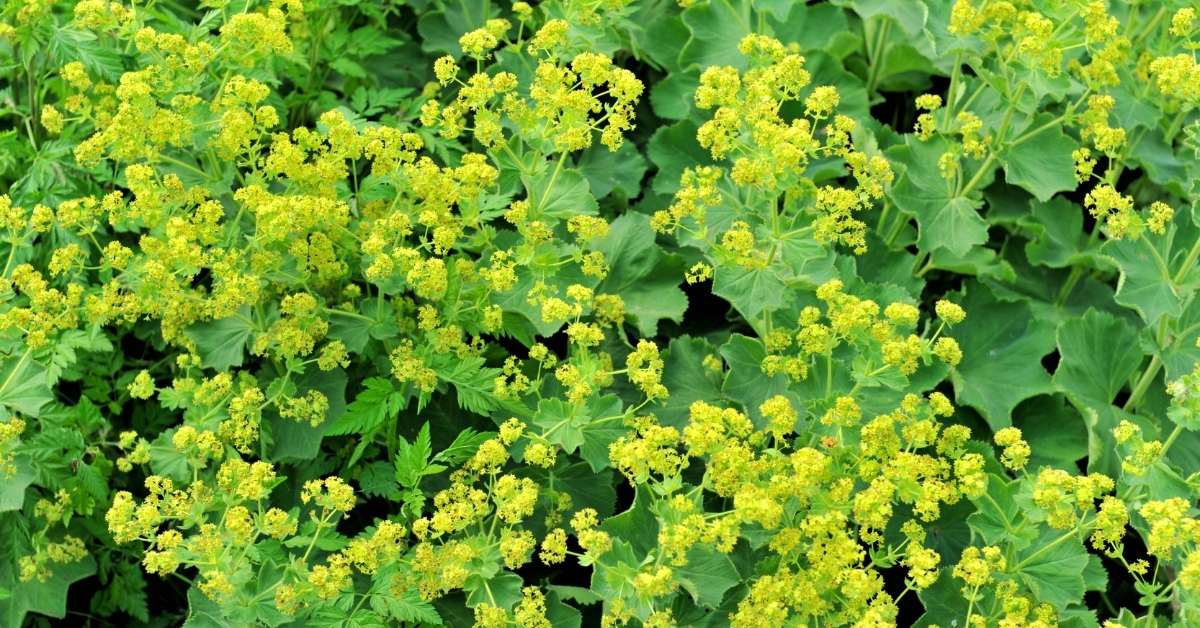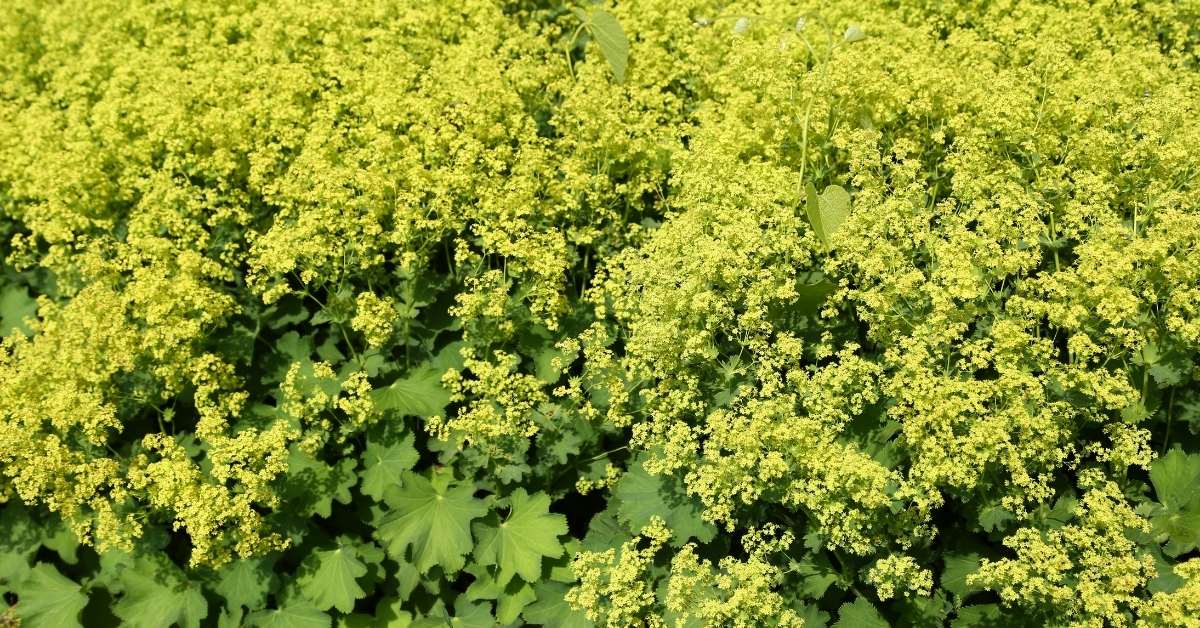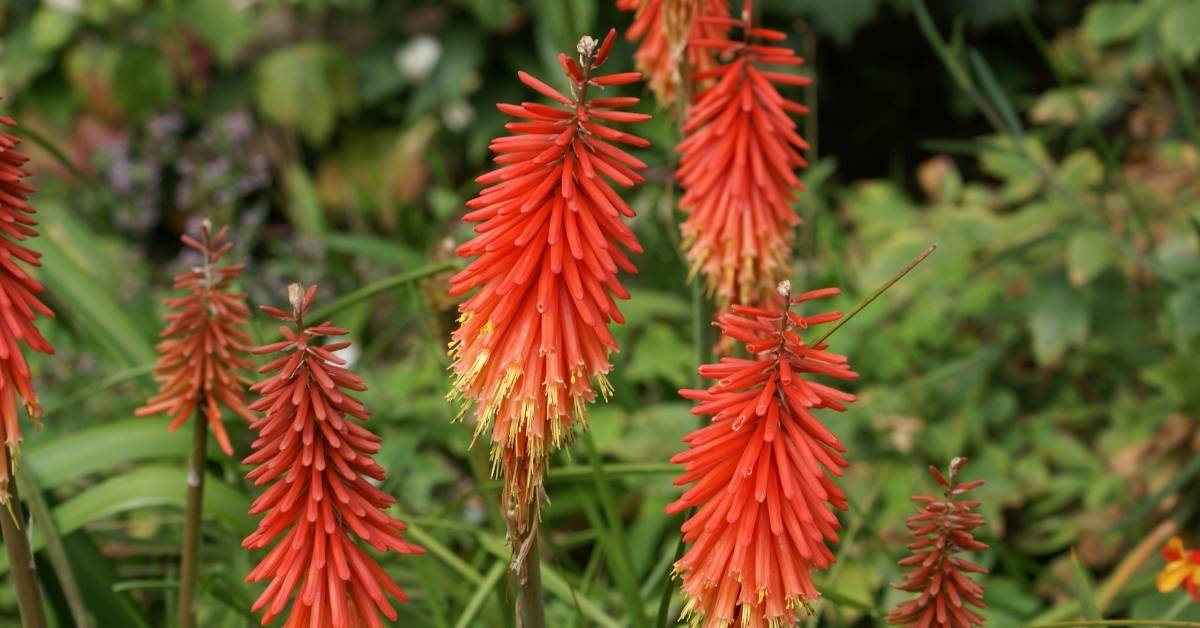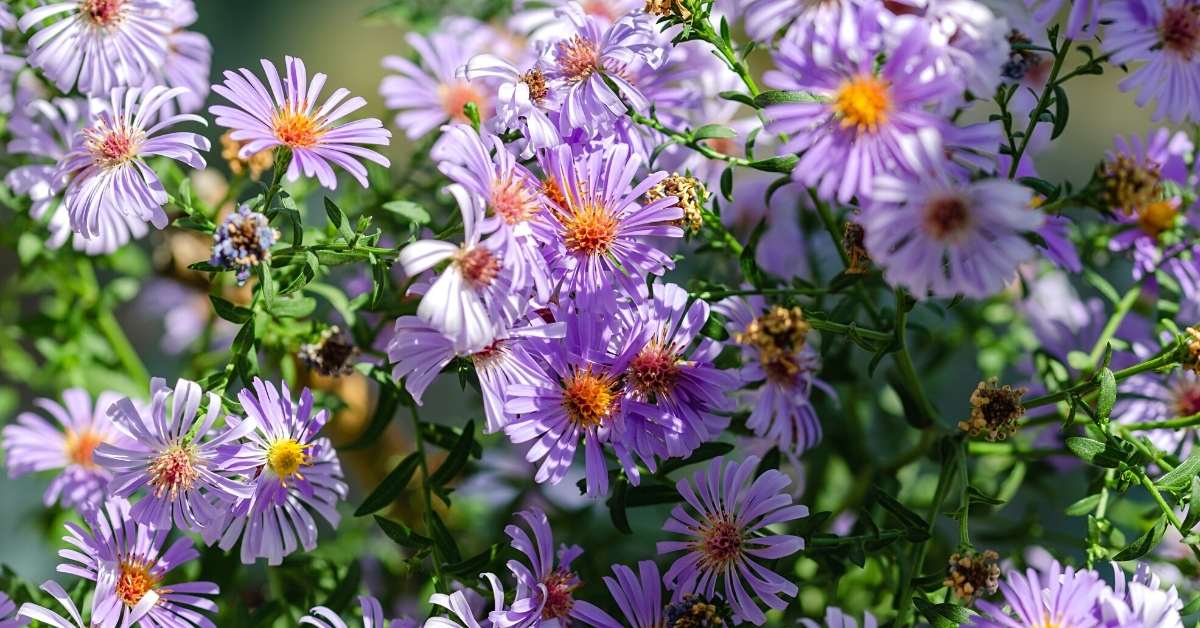Alchemilla Mollis or Lady’s Mantle is one of the green flowers (or, more appropriately, chartreuse) that I have to reserve judgment on when it comes to being a favorite plant.
It is a wonderful shade plant, and most folks don’t try to grow it there but rather leave it out in the sun, where it can languish unhappily.
Alchemilla Mollis Growing Conditions

This plant prefers a part-shade location where it gets some protection from the mid-day sun. It will thrive in the sunshine in good soil high in organic matter and regular moisture. It will grow in poor conditions, but it won’t be happy.
For best results, grow in good soil with adequate moisture in a part-shade location.
I have seen it growing in full dappled shade under deciduous trees, and it was doing fine. It is not a candidate for growing under evergreens with their full shade and dry soils (combined, these are a death sentence rather than a growing condition).
Flowering and Leaves of Lady’s Mantle
The magical thing about the leaves of this plant is that they collect and hold the dew. If you wander out into the garden on a bright dew-filled morning, you’ll find this plant glistening as the leaves are filled with tiny droplets of water. Excellent leaf structure.
The flowers are greenish-yellow and appear in early summer, covering the plant. Deadhead them off when they are done. They do make excellent cuts or dried flowers.
Hardiness and Propagation
The plant is easily hardy into USDA zone 4, and I’ve never lost one to winter kill.
Propagation is by seed or division. Divide mature clumps in early spring for best results. Seed can be sown in January for small plants to set outdoors in May.
This plant can self-sow to nuisance levels in warm climates (zone 6 and warmer), so deadheading is recommended.

Alchemilla Mollis Problems
I don’t know – never had any other than drying the plant to the bone and watching it wither away in a drought. It never recovered.
Other Species
With 300 species in the wild, you’ll sometimes see them pop up at specialist nurseries. The most commonly available seem to be:
A. Alpina – a dwarf form that is mat-forming and only 3-5 inches tall.
A. erythropoda with a more glaucous leaf and 7 inches tall
A. faeroensis growing up to 10 inches tall.
In general, Alchemilla Mollis or lady’s mantle is a fine plant for the general or part shade perennial border.

